Following on from yesterday’s stronger than expected wage growth, the Australian Bureau of Statistics (ABS) has released its labour market survey for October, which has the nation’s unemployment rate falling to its equal lowest level since 1974:
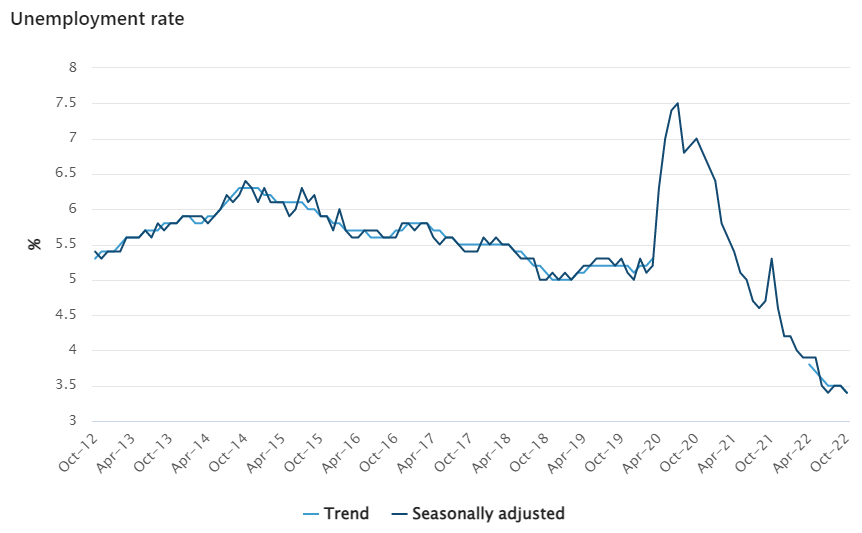
The underemployment rate also fell by 0.1%:
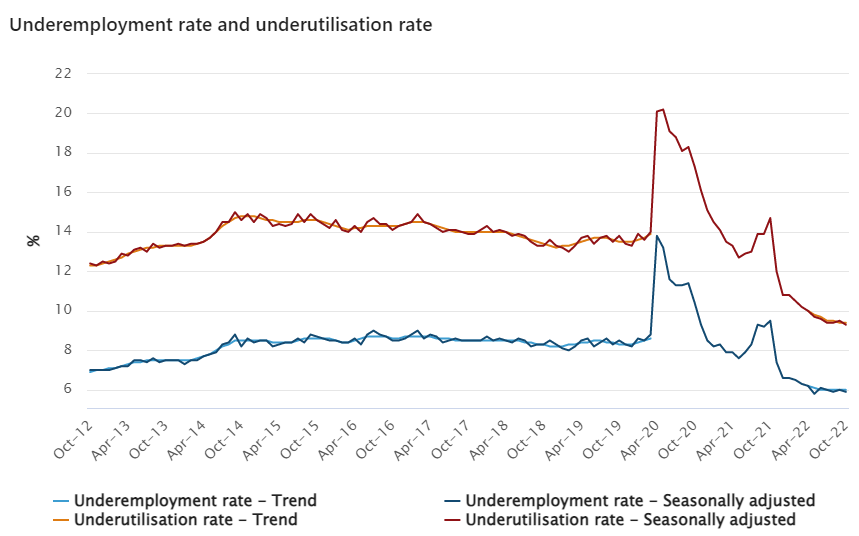
The result came off a 32,200 increase in jobs over the month, with the participation rate remaining flat at 66.5%:
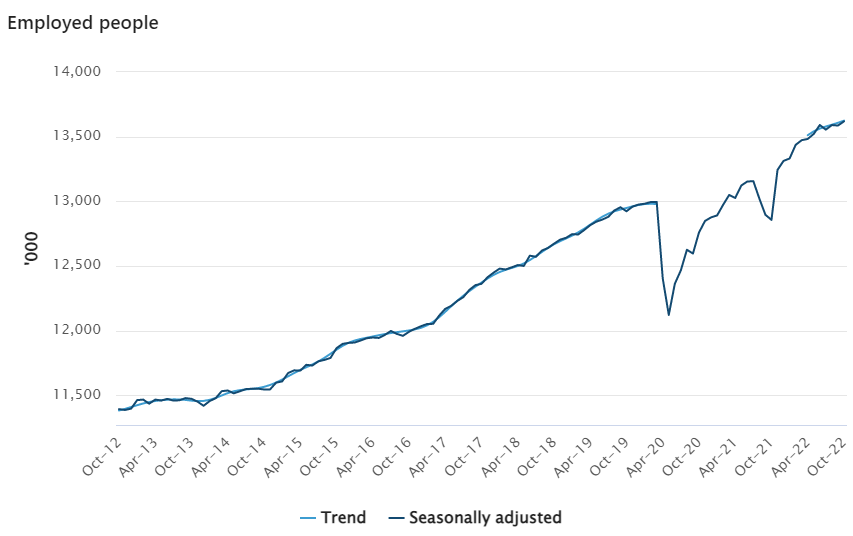
In a further sign of strength, hours worked rocketed 2.3% in October to be up 9.7% year-on-year:
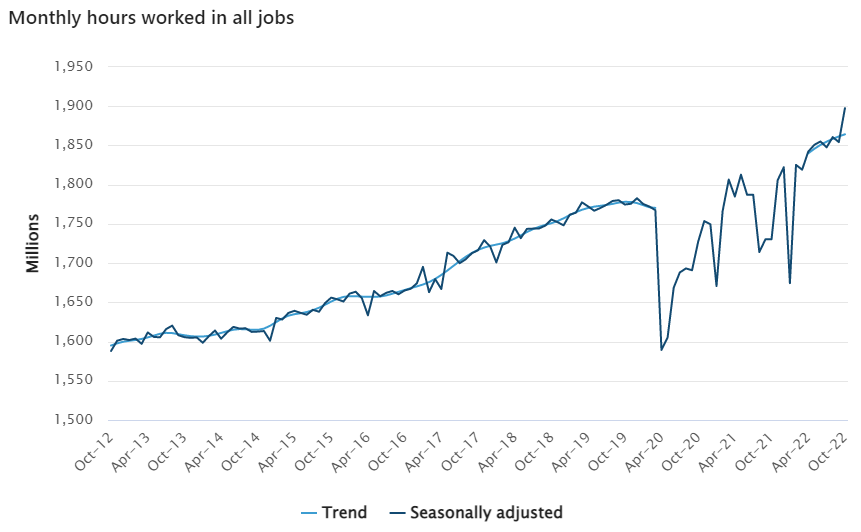
Finally, the employment-to-population ratio, which measures employment relative to the size of the population, hit a record high in trend terms:
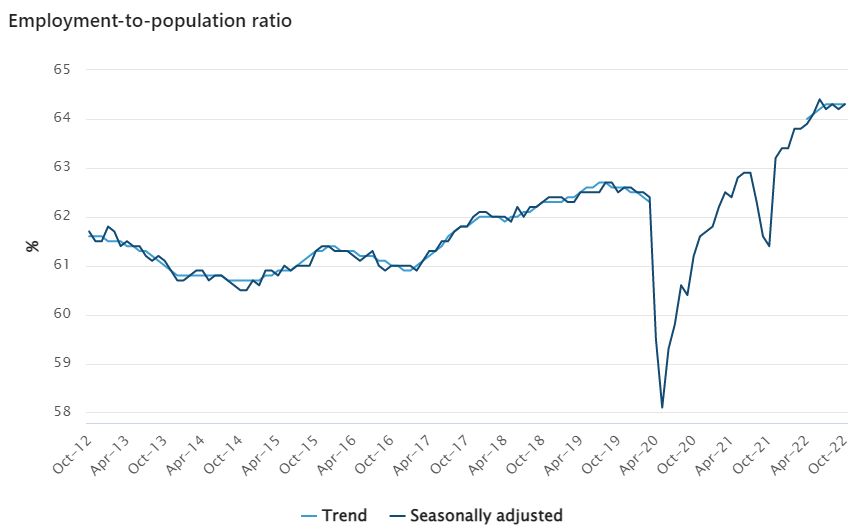
This labour market data is unambiguously strong and bolsters the case for the Reserve Bank of Australia (RBA) to lift the official cash rate in September.
However, it is important to note that the labour market survey is backward looking, and I am expecting the economy to slow sharply early next year as the cumulative impact of the RBA’s aggressive monetary tightening takes effect and thousands of cheap fixed rate mortgage terms expire and are reset to double or triple their current levels.
In addition, the Albanese Government’s immigration flood will add massively to labour supply, which will drive up unemployment and suppress wage growth.

